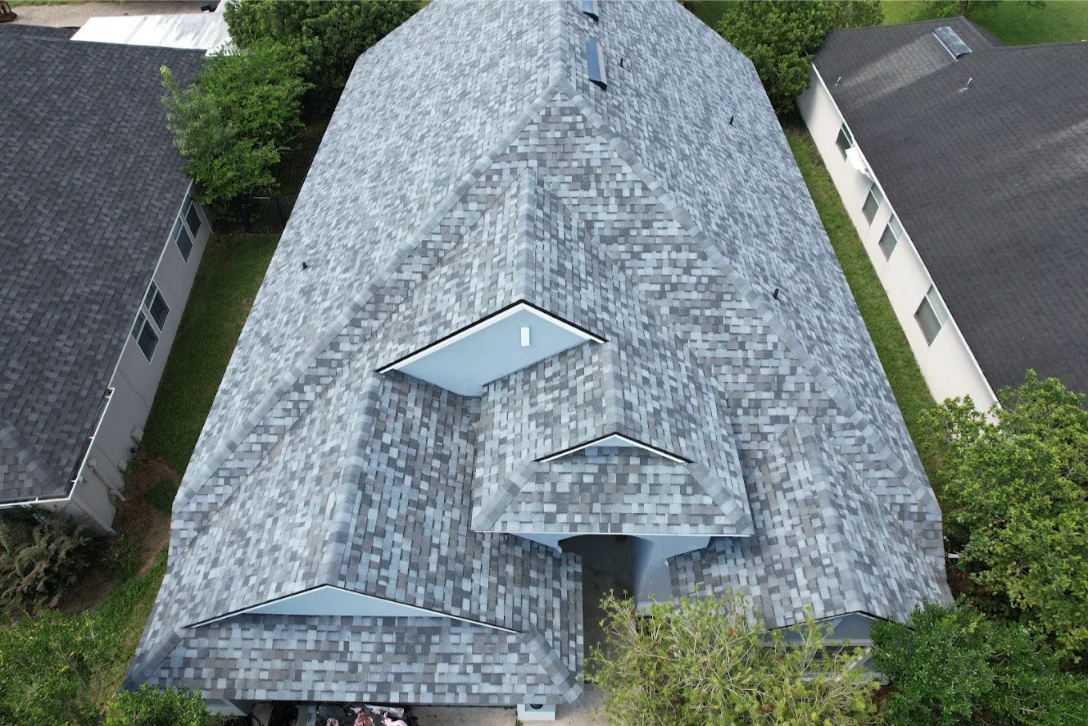
With winter fast approaching, now is the time to assess whether your roof is truly ready for the season ahead. Dependable roofers recommend evaluating your roof’s condition before the snow and ice set in to avoid expensive repairs or damage later on. Taking preventive steps such as inspecting for damage, improving insulation, and addressing potential weak spots can significantly improve your roof’s ability to handle harsh winter weather. This guide will walk you through key steps to prepare your roof and spot potential issues before they escalate.
Before winter arrives, carefully inspect your roof using this comprehensive checklist to ensure it’s ready for cold weather. Begin by examining shingles for cracks, curling, or any missing sections. Damaged shingles are more vulnerable to wind, snow, and ice. Next, check the flashing around chimneys, skylights, and vents, as loose or deteriorated flashing can allow moisture to seep in. Clear leaves, branches, and other debris from gutters and downspouts to keep water flowing properly and reduce the risk of ice dams. Inside your attic, look for any signs of leaks, mold, or pests, which could signal a compromised roof. Lastly, trim tree branches hanging over your roof to reduce the risk of branches snapping under heavy snow and causing damage. Taking these steps will help ensure your roof stands up to the elements.
Monitoring your roof for signs of damage throughout the winter helps prevent small problems from turning into expensive repairs. Check for shingles that are cracked, missing, or starting to curl, as these areas can allow water to enter your home. Sagging sections of the roof could indicate structural stress caused by heavy snow or ice buildup. Large icicles or ice dams forming along the eaves are also red flags, as they can force water underneath shingles and into your home. Inside your attic, look for water stains, mold growth, or musty odors, all of which could point to moisture seeping through the roof. Identifying these warning signs early allows you to make timely repairs and protect your home’s structural integrity throughout the season.
Regular maintenance plays a critical role in preserving your roof’s lifespan and ensuring it performs well during winter weather. Routine inspections allow you to catch problems before they escalate, while prompt repairs prevent minor damage from spreading. Clearing debris, sealing small leaks, and replacing worn-out shingles all contribute to a more resilient roof. Proper insulation and ventilation in the attic help regulate roof temperatures, minimizing the risk of ice dams and moisture buildup. Beyond protecting against weather damage, ongoing roof care can also improve energy efficiency and help maintain your home’s value. Neglecting roof maintenance increases the likelihood of leaks, mold, and costly structural damage — issues that can be far more expensive than proactive upkeep.
Heavy snow and freezing conditions put significant strain on your roof, so preparation is key to avoiding costly damage. Start by addressing any pre-existing damage, such as cracked shingles, loose flashing, or worn seals around roof openings. Even small vulnerabilities can worsen under the weight of snow. Clean gutters and downspouts thoroughly so melting snow can drain away instead of freezing into damaging ice dams. Inside your attic, check for proper insulation to keep heat inside your home and reduce uneven roof temperatures, which contribute to snow melt and refreezing. If you have large trees near your house, trim back branches that could break under heavy snow and fall onto your roof. With these steps in place, your roof will be better equipped to handle the challenges of winter.
Keeping your roof in good condition during the colder months requires proactive care and attention. Begin with a thorough inspection to identify and repair any damage that could worsen in freezing temperatures. Clear gutters and downspouts regularly to ensure proper drainage and prevent ice buildup along the edges of your roof. Removing overhanging branches reduces the risk of damage from falling limbs weighed down by snow or ice. Improve attic insulation to prevent heat loss, which helps maintain a more stable roof temperature and reduces the chances of ice dams forming. Seal any gaps or cracks that allow cold air to enter your home, improving both comfort and energy efficiency. For added peace of mind, consider scheduling a professional roof inspection to catch any hidden issues before winter weather sets in. Consistent care and preparation go a long way in protecting your roof throughout the season.
Share :
Jacksonville
4600 Touchton Rd Building 100, Suite 150, Jacksonville, FL 32246, United States
Tampa
5401 W Kennedy Blvd., Ste 100, Tampa, FL 33609
Venice
1101 Tamiami Trail S, Ste 100T, Venice, FL 34285
Orlando
37 N Orange Ave #500, Orlando, FL 32801, United States
Monday – Friday: 9:00 AM – 5:00 PM
Saturday – Sunday: Closed
Subscribe to our newsletter for the latest updates and offers.